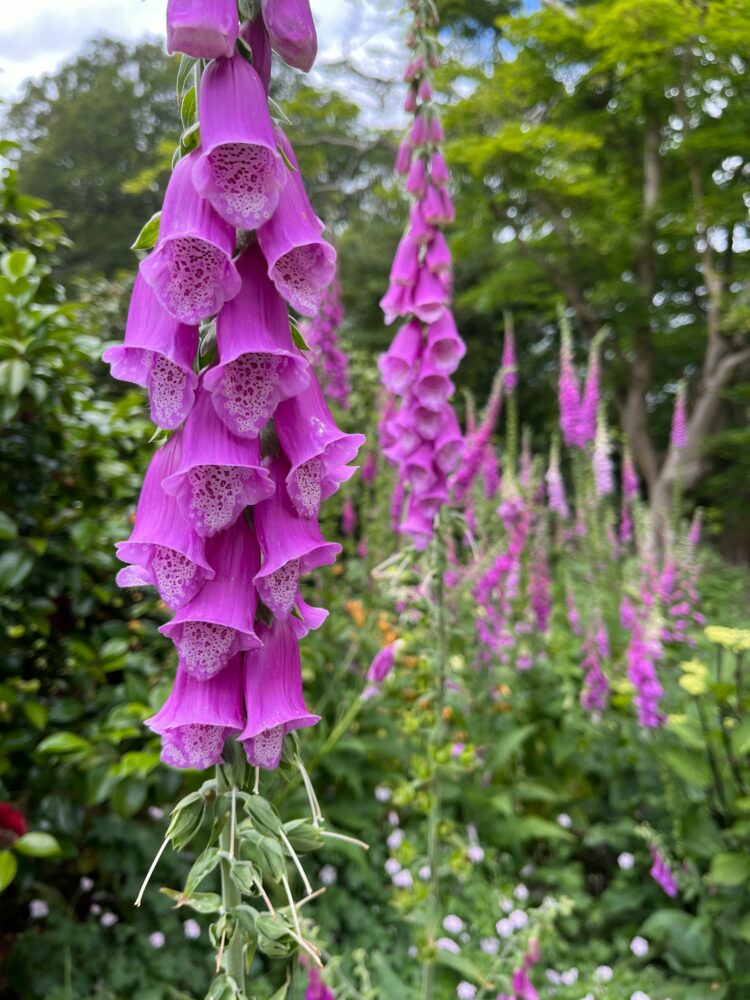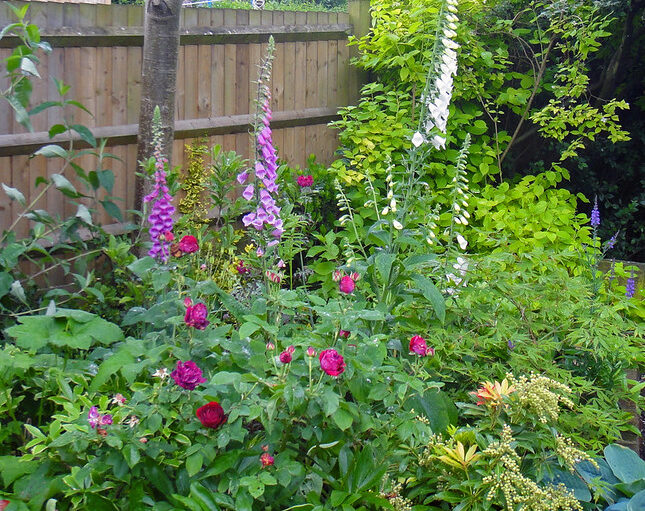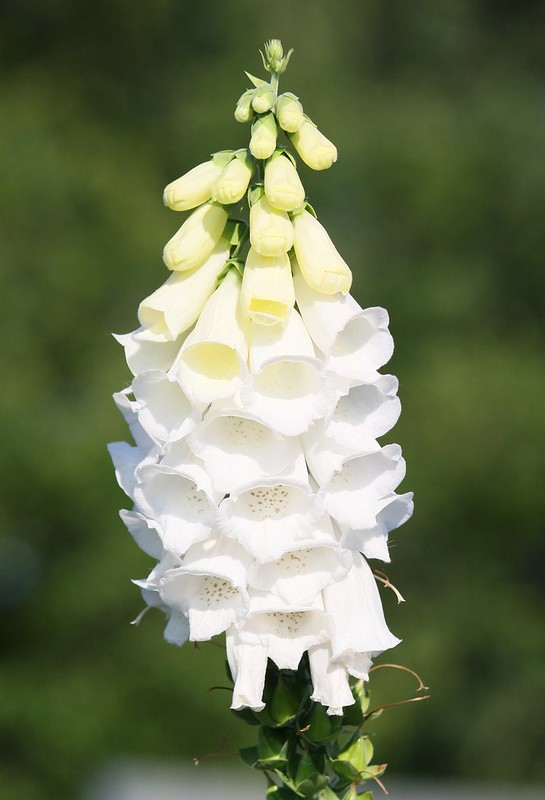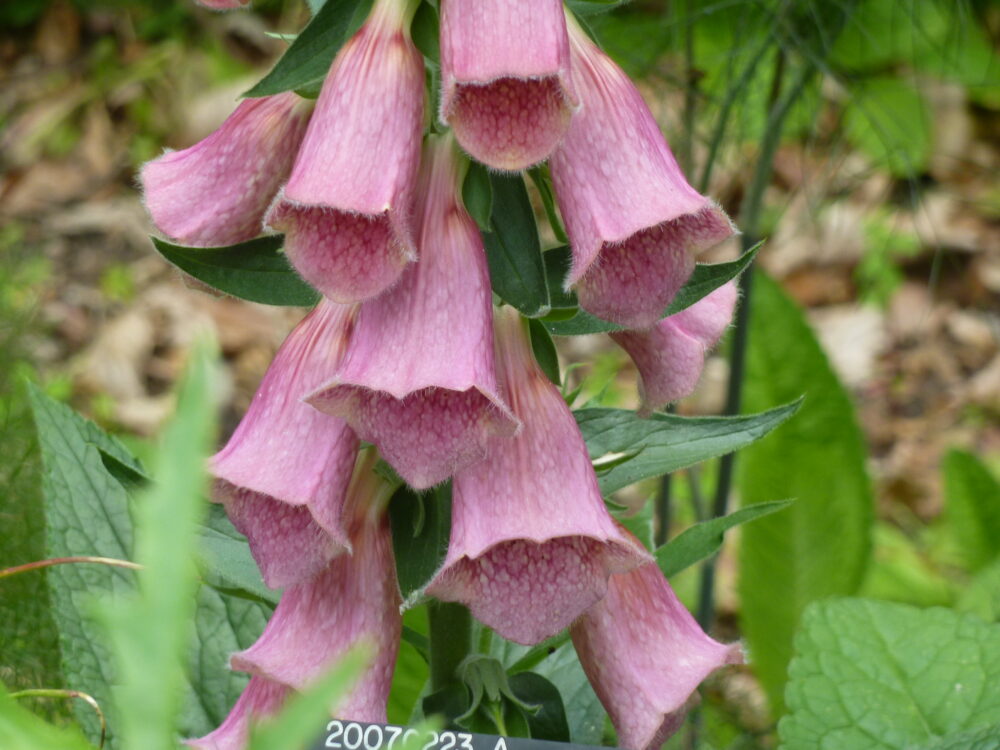May Plant of the Month: Foxgloves
Foxgloves are deservedly popular flowers. Associated with cottage garden planting, and naturalised woodland settings, they are beautiful to look at and are a magnet for bees.

With their iconic spires of bells, the native foxgloves, (latin name Digitalis), are instantly recognisable. They are often associated with woodland style planting and cottage gardens and can be seen as an old-fashioned flower. However, with new hybrids and different species available offering more colours, shapes and sizes, these easy-to-grow biennials and perennials have a much wider appeal.
Appearance
- With spires of bell-shaped, bee-friendly, tubular flowers, foxgloves create height within a planting scheme. They flower from late May through to September (depending on the variety and conditions), and many come into flower just before most summer herbaceous perennials, so they can look really striking within a bed.
- Digitalis purpurea is native to areas of Western Europe, including the UK. Purple, pink, red or occasionally white bell flowers with spotted throats are the most common colours associated with foxgloves.
- However, there are now varieties that have been bred from Digitalis purpurea such as ‘Suttons apricot’ or ‘Pams choice’.
- Short lived perennial varieties such as Digitalis grandiflora, are shades of yellows through to warm pinks. The different species vary in height, shape and size.
Right: Digitalis purpurea


Where to Plant Them
- Most foxgloves are biennial, which means they put on root and foliage growth in year one, and then flower and set seed in year two, before dying. Some varieties of foxglove are short-lived perennials and will flower every year for 3-5 years.
- Most foxgloves thrive in dappled shade. However, some species, such as Digitalis parviflora and Digitalis obscura, require full sun to be at their best. They are a woodland plant, so like woodland conditions that are moist and free draining, if you have a shady corner of your garden, consider adding foxgloves.
- Foxgloves do grow tall, above 1m, so avoid planting them under shrubs or small trees, they look great at the back of border behind summer flowering perennials or shrubs such as roses to fill the gap between spring and summer. Foxgloves can also be planted in large, sturdy containers, using loam-based compost with plenty of organic matter.
- Whether planting in a naturalised woodland setting or formal herbaceous border, foxgloves pair with so many other plants wonderfully. Because all parts of foxgloves are toxic, it’s best to plant them at the back of a border away from small children and pet’s reach.
Pests and Diseases
- Foxgloves are a trouble free plant and are usually untouched by slugs and snails. The leaves provide food for the caterpillars of several moth species but it’s best to leave them as they provide food for baby garden birds.
Right: Digitalis grandiflora


Plant Care
- Foxgloves require very little care and will flower and seed without any intervention from the gardener.
- Foxgloves can be grown from seed or planted as a more mature plant. Plant foxgloves in spring or autumn, directly into the garden. Water in well and continue to water foxgloves in pots regularly, especially during hot weather.
- Many foxgloves self-seed around the garden and seedlings often appear near the parent plant. These can be transplanted or potted up so you can ensure they are watered regularly.
- Avoid deadheading the flowers until the seeds have developed and ripened. You can then collect ripened seeds from August and scatter them directly where you want foxgloves to grow.
- As foxgloves are extremely toxic, you should always wash your hands thoroughly after handling seeds or any other part of the plant, or wear gloves. Keep plants and seeds away from small children, and make sure that older children can identify foxglove plants and that they know about the dangers of ingesting them.
Left: Digitalis purpurea f. albiflora
Varieties to Consider
- There are many Digitalis purpurea cultivars to choose from to suit your colour scheme or style. Digitalis purpurea ‘Suttons Apricot’ is a lovely soft apricot colour and looks great with other pink or pastel tones.
- Digitalis purpurea f. albiflora, is pure white with pink speckled throats and will grow in complete shade.
- Digitalis grandiflora is a perennial with large warm-yellow flowers.
- Digitalis x mertonensis also known as the strawberry foxglove, is a perennial with pink-red blooms.
Some of these varieties are shown in the photos above and right.
Right: Digitalis x mertonensis

From planning a new border to a complete garden remodel, we pride ourselves on transforming ideas into beautiful reality, with minimum disruption. If you’re based in or around the Reading and Newbury area, we’d love to meet and discuss your project in detail – book your free no-obligation garden consultation today.
Image Credits:
Foxgloves in the garden; Digitalis grandiflora; Digitalis purpurea f. albiflora